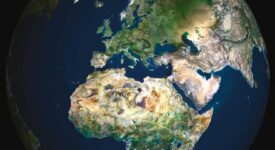The European Union on Wednesday (27 April) introduced a strategy designed to integrate its policy on the Arctic region with the focus on climate change, the environment, sustainable development and international cooperation. Federica Mogherini, the head of foreign affairs for the EU, stressed the importance of science and innovation and said that the EU would step up its existing engagement in the region. Mrs Mogherini also underlined the fragile nature of the Arctic region, which bears the brunt of climate change and mainly greenhouse gases.
The Arctic is heating up at a rate double the speed of the rest of the world, which results in rising sea levels and changing weather patterns, a process that has a negative impact on fishing routes, marine ecosystems and arctic wildlife. Mrs Mogherini therefore sought to emphasize the environmental, social, and economic importance of the region. EU’s Environment Commissioner, Karmenu Vella, commented that the EU is “putting a soft footprint in the Arctic snow”. “We impact on the Arctic and the Arctic impacts on us,” she said, adding that “Global weather patterns, our oceans, ecosystems and local biodiversity – the Arctic influences them all. While increasing human development is inevitable, it is in our hands to do it in a sustainable way. We have to do this in full respect of the livelihoods of those who live in the region and by protecting its most valuable resource: the environment.”
The new strategy on the Arctic takes into account the existing EU legislation as well as greenhouse gas emissions and EU’s forthcoming activities and projects. The new policy has three main pillars – climate change, economic and social development – while also acknowledging that the Arctic is a key strategic region for EU foreign and security policy. Ms Mogherini also mentioned that the Arctic is the only place in the world where three continents and the major players meet: Russia, the United States, Canada and a number of European countries that are not EU members.







